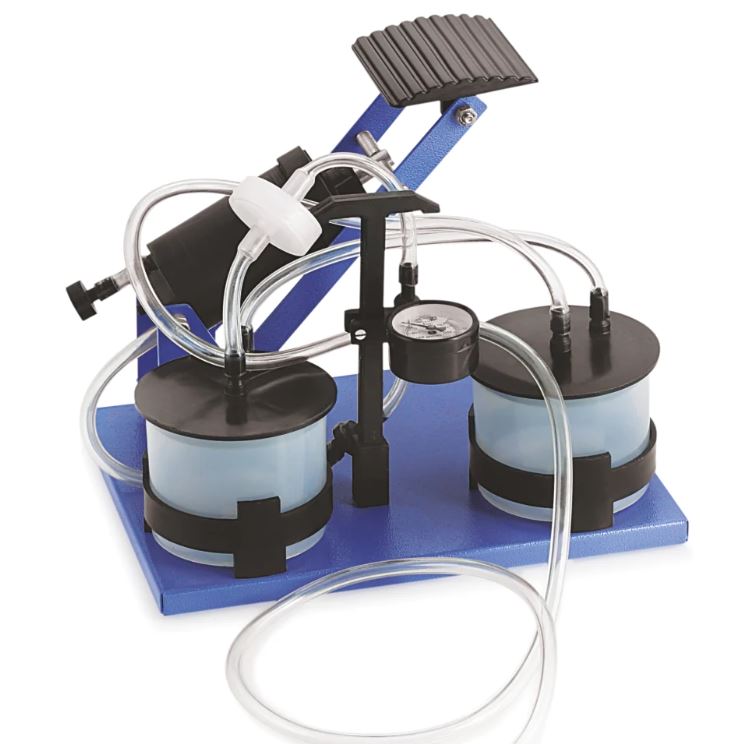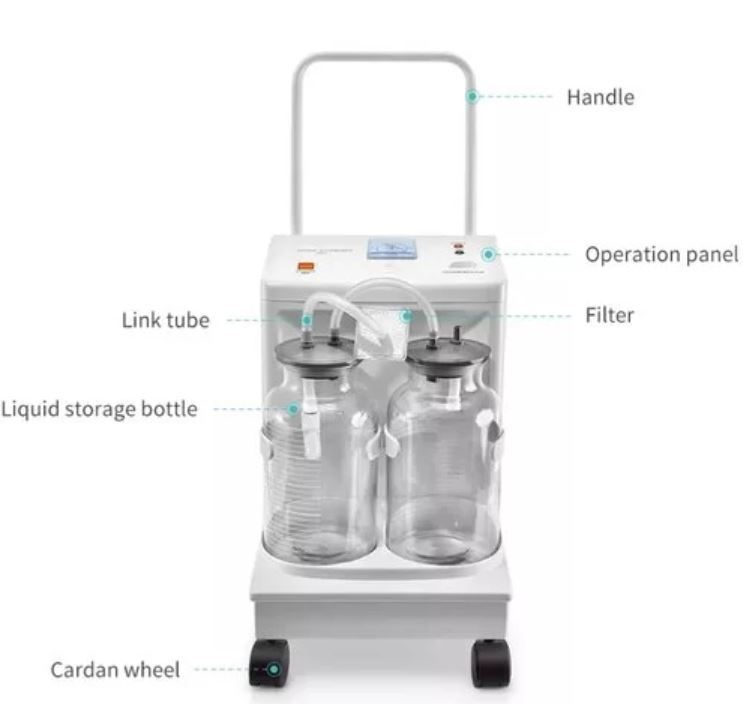
What are suction machines?
Suction machines play a crucial role in the medical field, providing a reliable and efficient way to remove fluids from patients during various procedures. In this article, we’ll explore the different aspects of suction machines, from their types and functionalities to their applications in medical settings and home healthcare.
Types of Suction Machines
Portable vs. Stationary
Suction machines come in two primary types: Portable and Stationary. Portable machines offer flexibility and mobility, making them ideal for emergency situations and ambulances. On the other hand, stationary machines are designed for more permanent installations in medical facilities.

Electric vs. Manual
Another key distinction lies in the power source. Electric suction machines are common in hospitals and clinics, providing consistent and powerful suction. Manual suction machines, often used as backups, require physical effort but can be crucial in resource-limited settings.
How Suction Machines Work
Suction machines are often used I medical settings, they are designed to remove fluids and secretions from a patient’s airway or surgical site.The vacuum creation process involves intricate mechanisms, and the components, such as the suction pump and collection canister, work together seamlessly to ensure effective fluid removal.
How to Choose the Right Suction Machine
Medical professionals must carefully consider various factors when selecting a suction machine. This section will delve into the key features to look for, ensuring that the chosen machine aligns with specific medical needs and requirements
- Suction Power:
- Fundamental for efficient fluid removal in medical procedures.
- High power for surgeries; adjustable settings for versatility.
- Portability:
- Essential for on-the-go medical professionals and home healthcare.
- Ensures suction availability wherever needed.
- Power Source:
- Consider electricity, battery, or manual operation based on usage environment.
- Noise Level:
- Opt for lower noise levels in medical settings to maintain focus during procedures.
- Canister Capacity:
- Choose a size matching expected fluid volume for efficient use.
- Cleaning and Maintenance:
- Easy disassembly for thorough cleaning; low maintenance for consistent performance.
- Battery Life:
- Critical for portable units; longer life for extended use without frequent recharging.
- Alarms and Indicators:
- Alerts for low battery, blockages, or full canisters enhance user awareness and safety.
- Regulatory Compliance:
- Ensure adherence to medical device regulations and standards for safet
Maintenance and Care
To guarantee the longe shelf life and reliability of suction machines, regular maintenance and proper care are essential. From routine cleaning and sterilization procedures to scheduled check-ups, healthcare providers must follow specific protocols to keep these machines in optimal condition
Advancements in Suction Machine Technology
As technology continues to advance, suction machines are not exempt from innovation. This part of the article will highlight recent advancements, improvements, and future trends in suction machine technology, ensuring that healthcare providers stay informed about the latest developments.
Challenges in Suction Machine Usage
While suction machines are invaluable, they are not without challenges.
- Inconsistent Suction Power:
- Challenge: Suction machines may face issues providing consistent suction power, impacting their effectiveness in medical procedures.
- Impact: Compromised fluid removal during critical situations, affecting patient care.
- Portability Limitations:
- Challenge: Portable suction machines may have limitations in terms of battery life and overall performance.
- Impact: Hindered mobility for healthcare professionals, especially in emergency or remote settings.
- Maintenance Complexity:
- Challenge: Some suction machines may have intricate designs, making disassembly and cleaning a complex process.
- Impact: Difficulty in maintaining proper hygiene standards, increasing the risk of contamination.
- Limited Battery Life:
- Challenge: Portable units may have shorter battery life, requiring frequent recharging.
- Impact: Disruptions in medical procedures or patient care due to the need for frequent charging.
- Cost vs. Quality Dilemma:
- Challenge: Balancing the cost of suction machines with their quality and features can be a decision-making challenge.
- Impact: Potential compromises in either quality or budget, affecting the overall suitability of the equipment for specific healthcare needs.
Cost Considerations
Balancing quality and affordability is a significant consideration for medical institutions. The websites like healwell surgitech, indiamart, amazon can list down the suppliers. The range is from Rs 4500 till Rs 11000. The cost varies as per the model and the specifications
Conclusion
In conclusion, suction machines are indispensable tools in the healthcare arsenal, contributing significantly to the efficiency of medical procedures and patient care. Understanding the types, functionalities, and applications of these machines is crucial for healthcare professionals looking to provide optimal treatment.
FAQs
-
Q: How often should suction machines be cleaned and sterilized?
Ans: Regular cleaning is recommended after each use, with thorough sterilization at least once a week.
-
Q:Can suction machine be used in home healthcare without professional supervision?
Ans:While some individuals can use suction machines at home, professional guidance is advisable, especially for those with complex medical needs.
-
Q:Are there specific certifications to look for when purchasing a suction machine?
Ans:Yes, ensure the suction machine complies with relevant medical device certifications and standards.
-
Q:What are the common challenges faced by healthcare professionals when using suction machine?
Ans: Challenges may include blockages, power issues, and user errors. Regular training and maintenance can help mitigate these issues.
-
Q: How do suction machines compare with traditional fluid removal methods in terms of cost?
Ans: While the initial investment may be higher, the efficiency and reliability of suction machines often justify the cost in the long run.